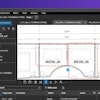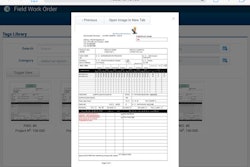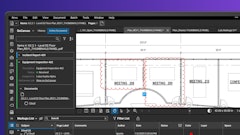
Change orders sure mess things up don't they? They keep your crews on-site longer than scheduled. They force you to scramble for extra materials. They mess with your project budgets and financial reviews. And worst of all, you may not get paid fairly, or not at all, for the extra work. We're going to look at how outstanding change orders impact your numbers and how to track them.
This issue was brought to my attention while reviewing financial performance with one of my coaching clients. The management team and I were looking over year to date and recent month financial results and realized that the accounting numbers didn't reflect reality due to outstanding change orders. We implemented a few systems to allow for adjustment of the numbers and for future improvement of change order revenue management.
Change Orders -- The Bane of All Construction Projects
Your accounting system should only reflect signed contract values. That creates a review problem as change orders are often not signed until late in the project or after work completion. Obviously that is not an ideal practice, and many consultants would tell you never to accept extra work without having a price agreement in place. We're more realistic than that. Most contracts require you to perform extra work when authorized by the superintendent or client. Those contract clauses do not give you the right to delay the work until pricing is agreed to. Furthermore, delaying extra work until the pricing is agreed to would delay the project. Practically speaking that is not an acceptable outcome.
As you well know, when extra work is required you suffer the costs up front. Unfortunately, payment drags out for months. Typically, the design team will be asked to approve the price by the owner. Since approving change order pricing is at the bottom of a designer's priority list change orders usually don't get priced for many, many weeks if not months. You can't bill for the work until the price is agreed to.
Why You Need Written Authorization of Change Orders
That makes you suffer one financial and two tracking problems. The financial problem hits you as delayed cash flow. The tracking problems are your books being off and your production management reports being off.
My client and I solved the tracking problems by installing a couple of new solutions. The first one is that we assume they will receive about 50 percent of the change order monies they've requested, and we adjust the project and company income statements accordingly. This is done in spreadsheets. We don't mess with the accounting system.
Next, the client adds the extra work volumes to their production management reports so they can accurately monitor field productivity. If you don't adjust budgeted work quantities and man-hours for the change order work your productivity ratios will be off.
The goal of the production reports is to monitor the pace at which work is going in. You need to be tracking the work volume required, the hours you've budgeted for the work, the amount of work installed to date, and the number of hours used to date. You must adjust your budgeted work volume and budgeted hours in accordance to the authorized change orders. Whether you get paid for the extra work or not is a financial issue not a production issue.
A word about change order impact on field productivity. Often change orders disrupt the flow of work and thereby slow down the crews. When you submit your pricing for the change order you need to take into consideration the lost productivity not only for the change order tasks themselves but also for the impact it will have on the remaining work.
You need to submit a revised schedule as part of the change order. Odds are that your client will reject the revised schedule and require you to hit the existing deadlines. Maintaining schedule will further slow your crews down. This dynamic will drive up your hours and increase the likelihood of going over budget.
What I've recommended is that you formally account for the production impact as soon as the change order is authorized. You make an off-the-book adjustment for the expected revenue associated with the change order. You do not adjust your contract value in the accounting system until the change order pricing is agreed to.
By implementing these solutions you will accomplish several things.
- You will have a history of cash received vs. that requested
- You will be able to monitor true field productivity
- You will know where you stand in real time financially
- You will know which design firms and clients cheat you on pricing
Before I sign off I'd like to bring up a massive change that has taken place in the construction industry over the last 30 years. Back in the early '80s when I entered this industry a tried and true strategy for contractors was to low ball their bid then make their money on change orders. Back then owners pretty much paid whatever the contractor said the change order cost. Using that strategy today will put a contractor out of business. In today's world change order prices are squeezed.
Owners write in contract clauses requiring the contractor to show actual costs and the mark-up is fixed - and usually way too low. For some stupid reason designers think a 15 percent OH&P is adequate. They also underestimate the cost of labor burden. Designers don't run businesses. They don't see the books of the companies they work for. They don't understand that labor burden can approach 50 percent of wage rate or that overhead often runs 20 percent by itself. Their ignorance of business costs wouldn't be a problem if (1) they weren't in the ear of their building owner and (2) weren't writing the contract clauses. They are, and they do.
Never assume that you will make money through change orders. That business strategy is dead.



















